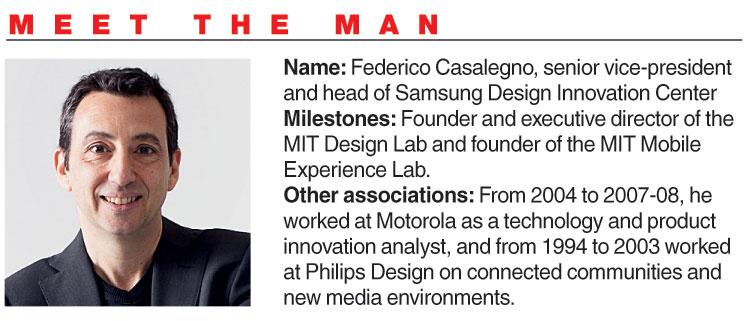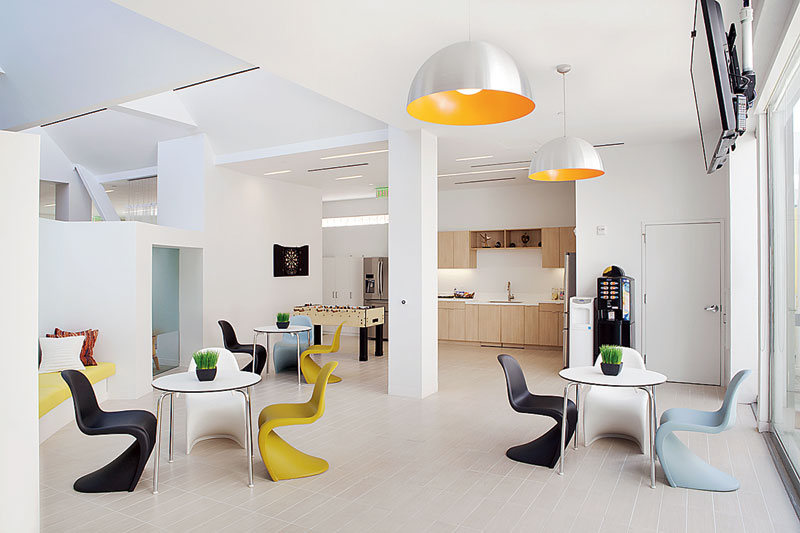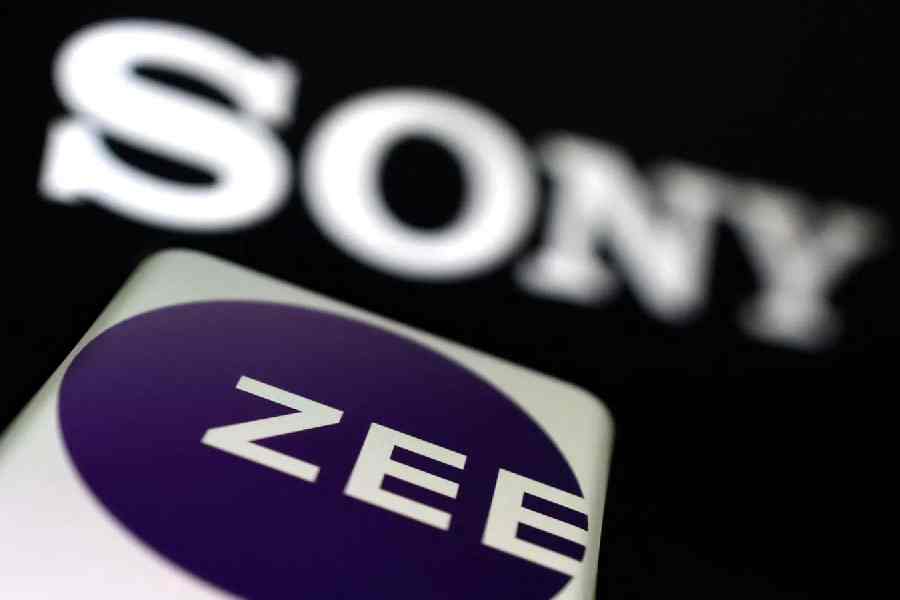A day after the launch of Samsung Galaxy Z Flip, standing in San Francisco’s Jackson Square neighbourhood, many thoughts crossed the mind, especially about how the world’s biggest smartphone maker employs tens of thousands of people. Here we were, at an office which is at the heart of the South Korean company’s design philosophy but all it takes is a small team — working in tandem with the company’s other design studios around the world — to make the impossible, possible. The city often becomes a part of a product’s philosophy but at the same time it needs to appeal to people around the world. How does that happen?
The elevator dings and we soon were face to face with the man helming the office — Federico Casalegno, who over the course of an hour proved even-tempered with the many questions he was expecting and some were unexpected.

Meet Federico Casalegno The Telegraph
Federico has had an illustrious career and knows more than a thing or two about product design. He is, after all, also the founder of the MIT Design Lab and Mobile Experience Lab.
Here’s what the senior vice-president and head of Samsung Design Innovation Center told The Telegraph.
How often is there a need for a design change for your premium phones?
From design perspective, we follow two paths — one that has to do with innovations and the other is design language. In way of design, we have achieved success and I don’t think one needs to change often; consistency is very important. On the other hand, we have recently launched some amazing products that are dramatically different, which is a good signal that we are enjoying consistency while trying to push the boundaries of technology.
On the wall are sketches of Galaxy Buds but some of them haven’t obviously made the final cut. How does the process work?
The process basically consists of a series of designs and iterations. There are two big phases. The first one is design for definition, which is basically about exploring the design we can embrace. We go from all sorts of iteration and prototypes — from paper to different kinds of materials… and quickly come up with options using 3D printing. Second, design for engineering. Once we understand what we want to do, we move into this phase. We go from sketches to prototypes. There are 3D printers and a fab (fabrication) lab where we look at the product in-house first. More than the number of iterations, which is a lot, it’s the two phases that are important.
Do you see a specific form factor that has the potential to go mainstream?
We are constantly creating new products and coming up with new form factors. I truly believe that we are the first ones to embrace new form factors and come up with technological innovations around it. If you look at the evolution of form factors within a similar framework, there have been several iterations in the last few years. A lot of things have changed. I am enthusiastic about how we are exploring different form factors that would fulfil consumer needs, which can be different. I am using the Galaxy Fold and it is particularly useful to me for the type of lifestyle I have — a lot of work, a lot of travel… so access to media and content. I can really watch a video or movie comfortably on the Fold. And the battery helps me go through my activities. I am sure we will identify different form factors that would suit different lifestyles. I won’t say there would be one but a variety that would match consumer needs.
Do you think every era has a design language? What are we looking at now?
The notion of simplicity is big. The way we design the UX is also important and targeted towards consumer needs. So we have had minimalist designs and (since then) there have been a lot of changes; one thing that’s always relevant is simplicity. To overcome the complexity technology offers is important; the idea is to present technology in a simple format.
What is stopping you from making an all-glass smartphone?
I am talking wearing the hat of the Design Innovation Centre. Our role is to show possibilities. First, we need to have a consistent design to push innovations that can be disruptive. I am passionate about technology. I have, say, 20 iterations of a foldable phone and I would like to explore that. But at the end of the day a product has to fulfil people’s needs. You need to design by loving the people you are designing for rather than thinking only about the product. If you think only about a product, you can put in features, shapes and forms that can be amazing but then you start to forget the people who would use it. We need to maintain a balance. We also have to think about economics.
A city like San Francisco must be inspiring your work but how do you market a product in markets like India or Japan?
We do both global and localised work. By having studios around the world, we can be attentive and careful about the needs of people around the world and imbibe local trends. The operations in India, for example, would be different from that in Latin America. We gain a unique perspective from the American market, which is tremendously important for us. And we are in San Francisco, which is a unique place where you can see innovations at every corner. This definitely influences our design and also how we see and perceive the world. Our design philosophy is embedded in the cultural scene and design scene in San Francisco. We see trends here and one of our goals is to make sure we communicate the same to all our design studios.
What are the materials of the future?
There are two broad directions. One, sustainable and environment-friendly elements. We are pushing this in a big way without making any compromise to the design factor or functionality of a device. Second, a lot of designing is happening with emerging materials that have certain capabilities and in the very long run, bio design is an option… materials that can embody a variety of sensors… materials that perform in a certain way. We have gone from purely interactive designs, how humans interact with machines… to a focus on services. When you design a product you need to think of it in the context of the community and people using the product. Today we are talking about computational designs in which we basically embody certain behaviours. We are at the beginning of this chapter and AI is helping us look at devices in a new way.

A few Samsung Design Innovation Center milestones The Telegraph










